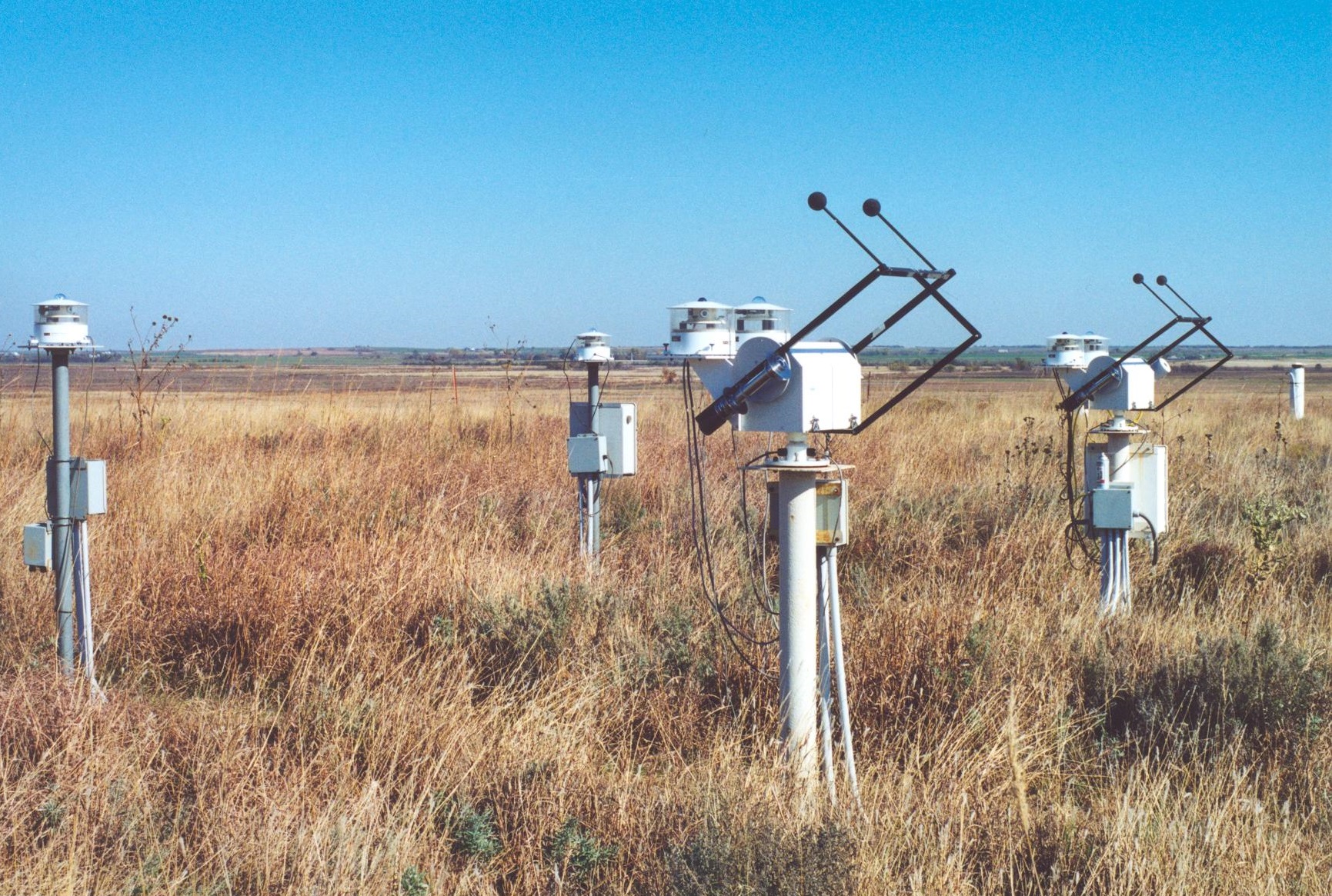Improved Broadband Radiation Data Quality Files Available From Southern Great Plains
Published: 3 August 2022

The Atmospheric Radiation Measurement (ARM) user facility processes yearly data from the Data Quality Assessment for ARM Radiation Data (QCRAD) product to produce level 2 (c2) files. These files undergo additional processing to improve the data. New c2-level data are available from the 2020–2021 processing at ARM’s Southern Great Plains (SGP) atmospheric observatory.
QCRAD has long been the recommended ARM datastream for broadband surface irradiance measurements. QCRAD applies multiple data quality checks, applies a correction for errors due to infrared loss in shortwave radiometric measurements, and calculates a best-estimate total downwelling shortwave irradiance value.
The new 2020–2021 data are available for the following 12 SGP sites and date ranges:
- the broadband radiometer station at the SGP Central Facility (Lamont, Oklahoma) from August 5, 2020, to September 8, 2021
- extended facility E11 (Byron, Oklahoma) from June 10, 2020, to July 6, 2021
- E12 (Pawhuska, Oklahoma) from June 10, 2020, to July 8, 2021
- E13 (Lamont, Oklahoma) from June 5, 2020, to July 15, 2021
- E31 (Anthony, Kansas) from June 9, 2020, to July 19, 2021
- E33 (Newkirk, Oklahoma) from June 12, 2020, to August 4, 2021
- E34 (Maple City, Kansas) from June 25, 2020, to August 3, 2021
- E35 (Tryon, Oklahoma) from July 1, 2020, to July 28, 2021
- E36 (Marshall, Oklahoma) from July 2, 2020, to July 28, 2021
- E37 (Waukomis, Oklahoma) from July 3, 2020, to July 29, 2021
- E39 (Morrison, Oklahoma) from June 30, 2020, to July 27, 2021
- E40 (Pawnee, Oklahoma) from July 3, 2020, to July 27, 2021.
ARM previously announced the release of 2020–2021 c2-level data for four other SGP sites along with the North Slope of Alaska and Eastern North Atlantic observatories.
During operational processing, QCRAD applies a generic correction to the shortwave downwelling hemispheric flux to correct for infrared loss within the radiometer.
On a yearly basis, c2-level processing replaces the generic correction with a more detailed correction that uses infrared loss corrections derived for the specific instruments. This correction will affect the output of the downwelling shortwave values for those occasions where the sum of the direct plus diffuse shortwave is not available as the “best estimate” for downwelling shortwave. When c2 files are available, they should be used.
More information is available on the QCRAD web page. To share your experience—such as how you use these data and how well they work for you—or to ask a question, contact ARM translator Damao Zhang.
Access the QCRAD data in the ARM Data Center. (Go here to request an account to download the data.)
To cite the QCRAD broadband radiometer station data (qcradbrs1long), please use doi:10.5439/1227217. For the other QCRAD data (qcrad1long), please use doi:10.5439/1227214.
Keep up with the Atmospheric Observer
Updates on ARM news, events, and opportunities delivered to your inbox
ARM User Profile
ARM welcomes users from all institutions and nations. A free ARM user account is needed to access ARM data.


















